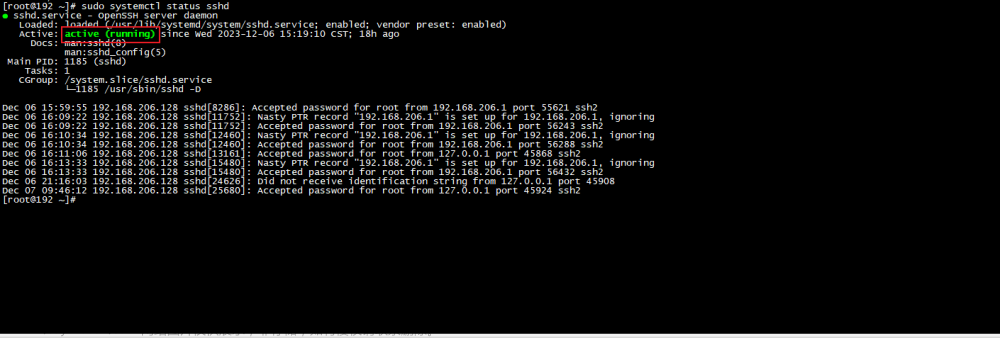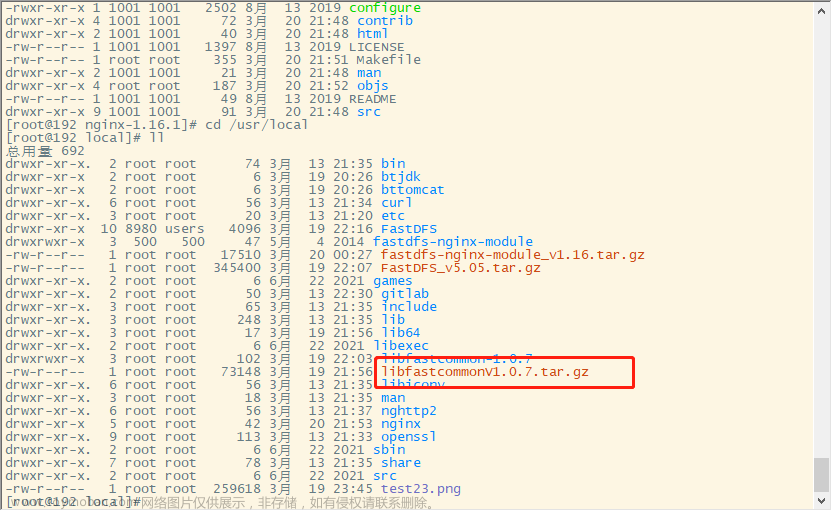在个人目录下创建新文件httpserver.py :
vim httpserver.py
文件内容为python3代码:
# !/usr/bin/env python3
import datetime
import email
import html
import http.server
import io
import mimetypes
import os
import posixpath
import re
import shutil
import sys
import urllib.error
import urllib.parse
import urllib.request
from http import HTTPStatus
__version__ = "0.1"
__all__ = ["SimpleHTTPRequestHandler"]
class SimpleHTTPRequestHandler(http.server.BaseHTTPRequestHandler):
server_version = "SimpleHTTP/" + __version__
extensions_map = _encodings_map_default = {
'.gz': 'application/gzip',
'.Z': 'application/octet-stream',
'.bz2': 'application/x-bzip2',
'.xz': 'application/x-xz',
}
def __init__(self, *args, directory=None, **kwargs):
if directory is None:
directory = os.getcwd()
self.directory = os.fspath(directory)
super().__init__(*args, **kwargs)
def do_GET(self):
f = self.send_head()
if f:
try:
self.copyfile(f, self.wfile)
finally:
f.close()
def do_HEAD(self):
f = self.send_head()
if f:
f.close()
def send_head(self):
path = self.translate_path(self.path)
f = None
if os.path.isdir(path):
parts = urllib.parse.urlsplit(self.path)
if not parts.path.endswith('/'):
# redirect browser - doing basically what apache does
self.send_response(HTTPStatus.MOVED_PERMANENTLY)
new_parts = (parts[0], parts[1], parts[2] + '/',
parts[3], parts[4])
new_url = urllib.parse.urlunsplit(new_parts)
self.send_header("Location", new_url)
self.end_headers()
return None
for index in "index.html", "index.htm":
index = os.path.join(path, index)
if os.path.exists(index):
path = index
break
else:
return self.list_directory(path)
ctype = self.guess_type(path)
if path.endswith("/"):
self.send_error(HTTPStatus.NOT_FOUND, "File not found")
return None
try:
f = open(path, 'rb')
except OSError:
self.send_error(HTTPStatus.NOT_FOUND, "File not found")
return None
try:
fs = os.fstat(f.fileno())
# Use browser cache if possible
if ("If-Modified-Since" in self.headers
and "If-None-Match" not in self.headers):
# compare If-Modified-Since and time of last file modification
try:
ims = email.utils.parsedate_to_datetime(self.headers["If-Modified-Since"])
except (TypeError, IndexError, OverflowError, ValueError):
# ignore ill-formed values
pass
else:
if ims.tzinfo is None:
# obsolete format with no timezone, cf.
# https://tools.ietf.org/html/rfc7231#section-7.1.1.1
ims = ims.replace(tzinfo=datetime.timezone.utc)
if ims.tzinfo is datetime.timezone.utc:
# compare to UTC datetime of last modification
last_modif = datetime.datetime.fromtimestamp(
fs.st_mtime, datetime.timezone.utc)
# remove microseconds, like in If-Modified-Since
last_modif = last_modif.replace(microsecond=0)
if last_modif <= ims:
self.send_response(HTTPStatus.NOT_MODIFIED)
self.end_headers()
f.close()
return None
self.send_response(HTTPStatus.OK)
self.send_header("Content-type", ctype)
self.send_header("Content-Length", str(fs[6]))
self.send_header("Last-Modified",
self.date_time_string(fs.st_mtime))
self.end_headers()
return f
except:
f.close()
raise
def list_directory(self, path):
try:
list_dir = os.listdir(path)
except OSError:
self.send_error(HTTPStatus.NOT_FOUND, "No permission to list_dir directory")
return None
list_dir.sort(key=lambda a: a.lower())
r = []
try:
display_path = urllib.parse.unquote(self.path, errors='surrogatepass')
except UnicodeDecodeError:
display_path = urllib.parse.unquote(path)
display_path = html.escape(display_path, quote=False)
enc = sys.getfilesystemencoding()
form = """
<h1>文件上传</h1>\n
<form ENCTYPE="multipart/form-data" method="post">\n
<input name="file" type="file"/>\n
<input type="submit" value="upload"/>\n
</form>\n"""
title = 'Directory listing for %s' % display_path
r.append('<!DOCTYPE HTML PUBLIC "-//W3C//DTD HTML 4.01//EN" '
'"http://www.w3.org/TR/html4/strict.dtd">')
r.append('<html>\n<head>')
r.append('<meta http-equiv="Content-Type" '
'content="text/html; charset=%s">' % enc)
r.append('<title>%s</title>\n</head>' % title)
r.append('<body>%s\n<h1>%s</h1>' % (form, title))
r.append('<hr>\n<ul>')
for name in list_dir:
fullname = os.path.join(path, name)
displayname = linkname = name
# Append / for directories or @ for symbolic links
if os.path.isdir(fullname):
displayname = name + "/"
linkname = name + "/"
if os.path.islink(fullname):
displayname = name + "@"
# Note: a link to a directory displays with @ and links with /
r.append('<li><a href="%s">%s</a></li>' % (urllib.parse.quote(linkname, errors='surrogatepass'),
html.escape(displayname, quote=False)))
r.append('</ul>\n<hr>\n</body>\n</html>\n')
encoded = '\n'.join(r).encode(enc, 'surrogate escape')
f = io.BytesIO()
f.write(encoded)
f.seek(0)
self.send_response(HTTPStatus.OK)
self.send_header("Content-type", "text/html; charset=%s" % enc)
self.send_header("Content-Length", str(len(encoded)))
self.end_headers()
return f
def translate_path(self, path):
# abandon query parameters
path = path.split('?', 1)[0]
path = path.split('#', 1)[0]
# Don't forget explicit trailing slash when normalizing. Issue17324
trailing_slash = path.rstrip().endswith('/')
try:
path = urllib.parse.unquote(path, errors='surrogatepass')
except UnicodeDecodeError:
path = urllib.parse.unquote(path)
path = posixpath.normpath(path)
words = path.split('/')
words = filter(None, words)
path = self.directory
for word in words:
if os.path.dirname(word) or word in (os.curdir, os.pardir):
# Ignore components that are not a simple file/directory name
continue
path = os.path.join(path, word)
if trailing_slash:
path += '/'
return path
def copyfile(self, source, outputfile):
shutil.copyfileobj(source, outputfile)
def guess_type(self, path):
base, ext = posixpath.splitext(path)
if ext in self.extensions_map:
return self.extensions_map[ext]
ext = ext.lower()
if ext in self.extensions_map:
return self.extensions_map[ext]
guess, _ = mimetypes.guess_type(path)
if guess:
return guess
return 'application/octet-stream'
def do_POST(self):
r, info = self.deal_post_data()
self.log_message('%s, %s => %s' % (r, info, self.client_address))
enc = sys.getfilesystemencoding()
res = [
'<!DOCTYPE HTML PUBLIC "-//W3C//DTD HTML 4.01//EN" '
'"http://www.w3.org/TR/html4/strict.dtd">',
'<html>\n<head>',
'<meta http-equiv="Content-Type" content="text/html; charset=%s">' % enc,
'<title>%s</title>\n</head>' % "Upload Result Page",
'<body><h1>%s</h1>\n' % "Upload Result"
]
if r:
res.append('<p>SUCCESS: %s</p>\n' % info)
else:
res.append('<p>FAILURE: %s</p>' % info)
res.append('<a href=\"%s\">back</a>' % self.headers['referer'])
res.append('</body></html>')
encoded = '\n'.join(res).encode(enc, 'surrogate escape')
f = io.BytesIO()
f.write(encoded)
length = f.tell()
f.seek(0)
self.send_response(200)
self.send_header("Content-type", "text/html")
self.send_header("Content-Length", str(length))
self.end_headers()
if f:
self.copyfile(f, self.wfile)
f.close()
def deal_post_data(self):
content_type = self.headers['content-type']
if not content_type:
return False, "Content-Type header doesn't contain boundary"
boundary = content_type.split("=")[1].encode()
remain_bytes = int(self.headers['content-length'])
line = self.rfile.readline()
remain_bytes -= len(line)
if boundary not in line:
return False, "Content NOT begin with boundary"
line = self.rfile.readline()
remain_bytes -= len(line)
fn = re.findall(r'Content-Disposition.*name="file"; filename="(.*)"', line.decode())
if not fn:
return False, "Can't find out file name..."
path = self.translate_path(self.path)
fn = os.path.join(path, fn[0])
line = self.rfile.readline()
remain_bytes -= len(line)
line = self.rfile.readline()
remain_bytes -= len(line)
try:
out = open(fn, 'wb')
except IOError:
return False, "Can't create file to write, do you have permission to write?"
preline = self.rfile.readline()
remain_bytes -= len(preline)
while remain_bytes > 0:
line = self.rfile.readline()
remain_bytes -= len(line)
if boundary in line:
preline = preline[0:-1]
if preline.endswith(b'\r'):
preline = preline[0:-1]
out.write(preline)
out.close()
return True, "File '%s' upload success!" % fn
else:
out.write(preline)
preline = line
return False, "Unexpect Ends of data."
if __name__ == '__main__':
try:
port = int(sys.argv[1])
except Exception:
port = 8000
print('-------->> Warning: Port is not given, will use deafult port: 8000 ')
print('-------->> if you want to use other port, please execute: ')
print('-------->> python SimpleHTTPServerWithUpload.py port ')
print("-------->> port is a integer and it's range: 1024 < port < 65535 ")
http.server.test(
HandlerClass=SimpleHTTPRequestHandler,
ServerClass=http.server.HTTPServer,
port=port
)
在需要暴露的目录下启动http服务,如/data/codes/文章来源:https://www.toymoban.com/news/detail-716340.html
cd /data/codes/
python3 httpserver.py 8888
随后在个人电脑访问http://ip:8888即可浏览文件、上传文件: 文章来源地址https://www.toymoban.com/news/detail-716340.html
文章来源地址https://www.toymoban.com/news/detail-716340.html
到了这里,关于python3 简易 http server:实现本地与远程服务器传大文件的文章就介绍完了。如果您还想了解更多内容,请在右上角搜索TOY模板网以前的文章或继续浏览下面的相关文章,希望大家以后多多支持TOY模板网!




![[Python3]爬虫HTTP Error 500错误,报错信息:urllib.error.HTTPError: HTTP Error 500: INTERNAL SERVER ERROR](https://imgs.yssmx.com/Uploads/2024/02/593027-1.png)
![[Python http.server] 搭建http服务器用于下载/上传文件](https://imgs.yssmx.com/Uploads/2024/02/504673-1.png)





